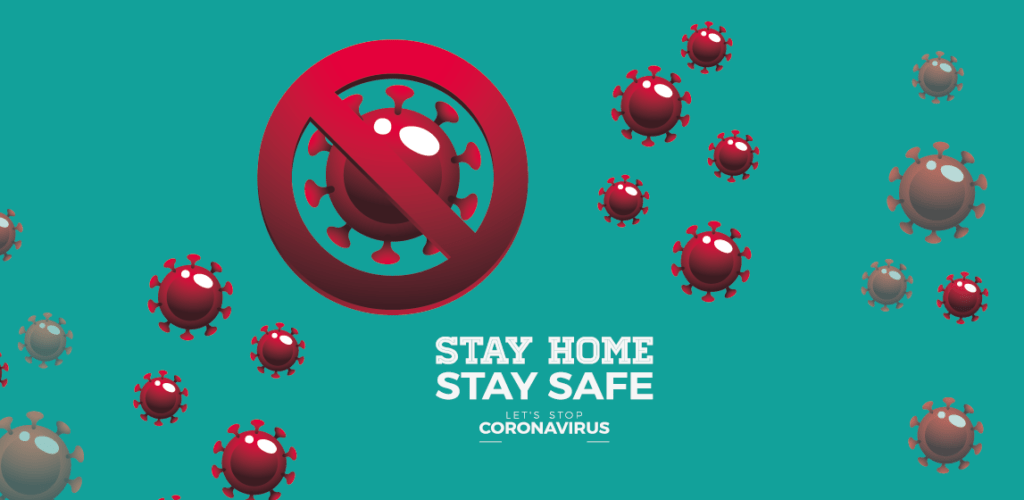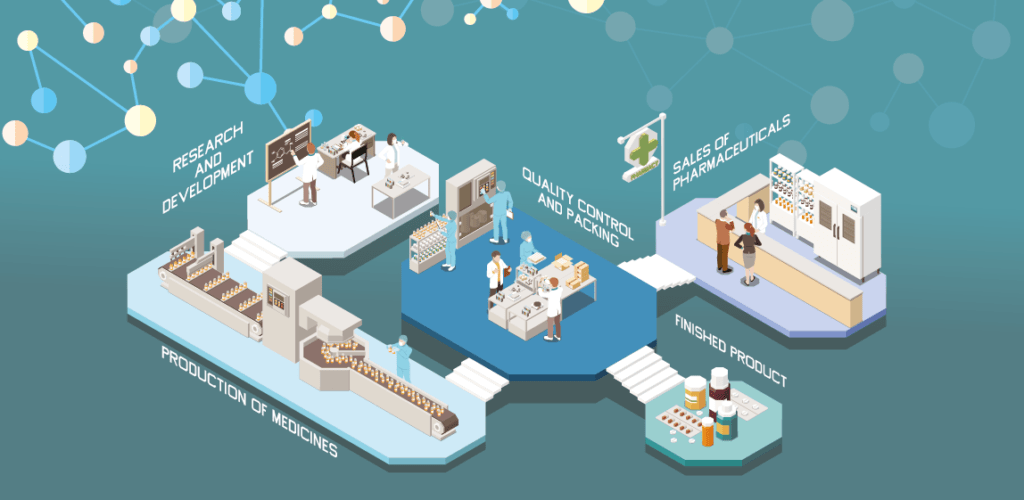Pharmaceutical industry is growing rapidly in Bangladesh
Pharmaceutical industry at a glance
Pharmaceutical industry is one of the several sectors in our country for which we can be proud of. Before liberation, there was hardly any pharmaceutical manufacturer but several years after the independence things changed. The development of the pharmaceutical industry accelerated, especially with the introduction of the drug Control Ordinance-1982.
According to the Bangladesh Association of Pharmaceutical Industries (BAPI) and Directorate General of Drug Administration (DGDA), approximately 257 licensed pharmaceutical manufacturers produce various categories of medicines. These companies are fulfilling 98% of the country’s total medicine demand while exporting their products to 121 countries across the world.
Over the years, this industry has developed rapidly and local manufacturers enhanced their capability to produce drugs such as allopathic, homoeopathic, Unani and ayurvedic or herbal. Around 80% of the drugs produced by these pharmaceutical companies are predominantly generic drugs and 20% of them are patented drugs.
Currently, pharmaceutical industry has around 3,534 generics of allopathic medicine, 2,313 registered Homeopathic drugs, 5,771 registered Unani Drugs and 3,899 registered Ayurvedic drugs.
Registered Bangladeshi drugs
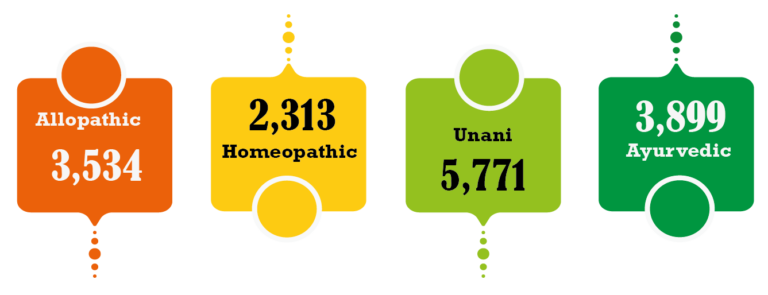
Source: Directorate General of Drug Administration
Domestic demand for pharmaceuticals has increased significantly from just BDT 102 billion in 2013 to around BDT 230 in 2019. The sector has achieved a compound annual growth rate (CAGR) of 13.90% during the last five years. Demand is mostly driven by the fact that Bangladesh has a population of 160 million people.
Industry insiders expect that domestic consumption would accelerate in the coming years. With an estimated15-20% year-on-year growth, the industry could be worth around BDT 400 billion to 500 billion by 2024.
Registered Bangladeshi drugs
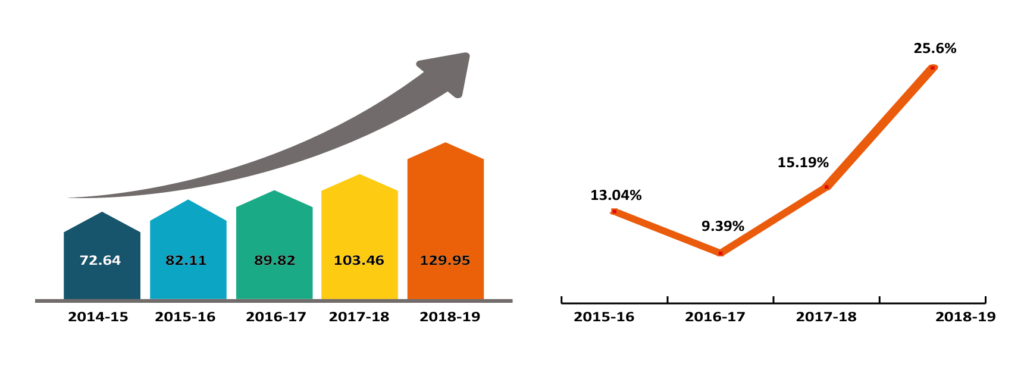
Source: IQVIA & EBLSL
Major domestic players
Square Pharmaceuticals Ltd – a flagship concern of Square Group – is the leading manufacturers. With a local market share of 17%, it has been exporting antibiotics and other pharmaceuticals to 42 countries since 1987. The company reported having a turnover of BDT 50.87 billion during the 2018-19 FY with an annual growth of 10.85%.
Incepta Pharmaceuticals Ltd has earned a good reputation among the medical community with its range of products. Its products include tablets, capsules, oral liquids, ampoules, dry powder vials, powder for suspension, nasal sprays, eye drops and human vaccine, just to name a few.
The company also specialized in producing value-added high technology dosage forms like sustained-release tablets, quick mouth dissolving tablets, effervescent tablets, barrier coated delayed-release tablets, Insulin and Insulin analogue and biological products. Incepta currently exports its products to 68 countries in the world.
Major players of the pharmaceutical industry
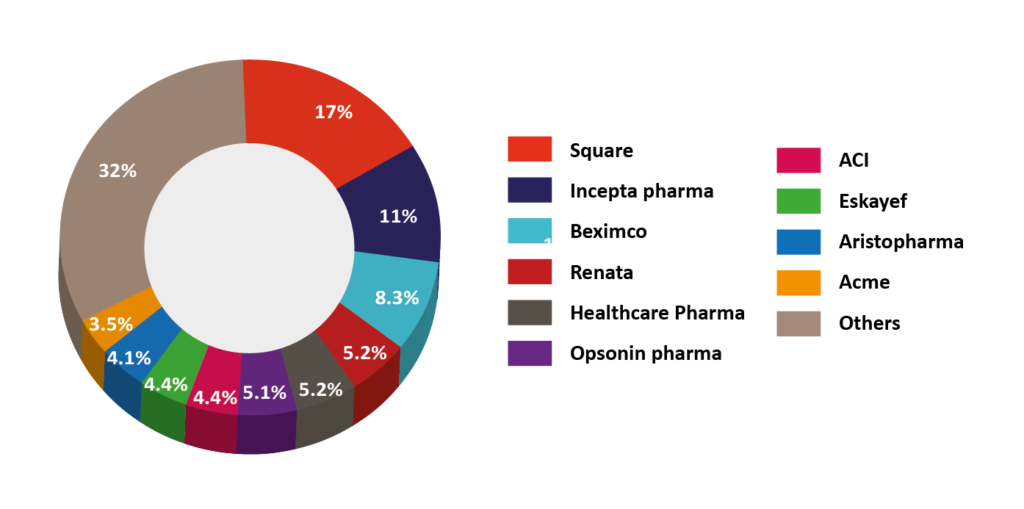
Source: IQVIA & EBLSL
The company also specialized in producing value-added high technology dosage forms like sustained-release tablets, quick mouth dissolving tablets, effervescent tablets, barrier coated delayed-release tablets, Insulin and Insulin analogue and biological products. Incepta currently exports its products to 68 countries in the world.
Export of Pharmaceuticals Product of Bangladesh and Y-on-Year Growth (USD Million)
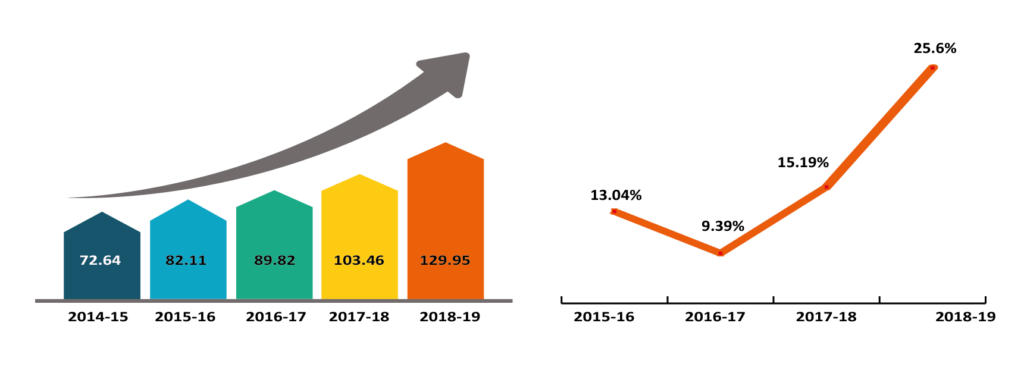
Source: Export Promotion Bureau (EPB)
During the 2018-2019 fiscal year, almost half (48.59%) of the US$ 129.95 million export earnings of pharmaceutical products generated from five countries – Myanmar, Sri Lanka, USA, Philippines, and Kenya. Myanmar was the biggest buyer during the same period as 16.07% of total drug exports ending there.
Export Concentration of Pharma in 2018-19
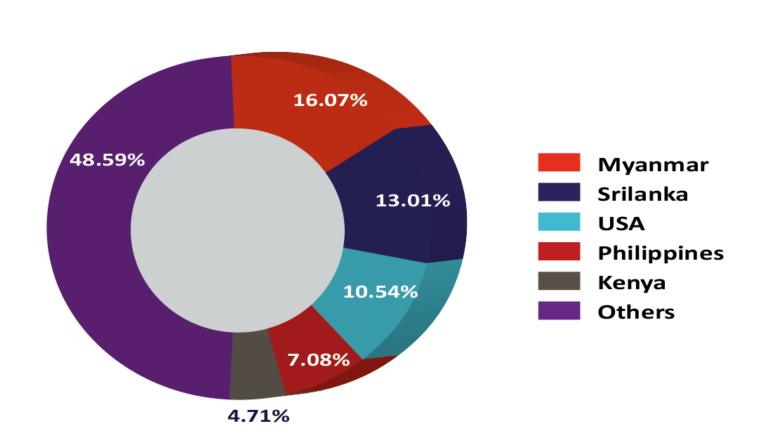
Source: Export Promotion Bureau (EPB)
The government of Bangladesh has given huge emphasis on the export of pharmaceutical products from and acknowledged that this sector has a great potential to be the second most exporting goods after ready-made garments.
Export earnings of Major Players – in Million BDT
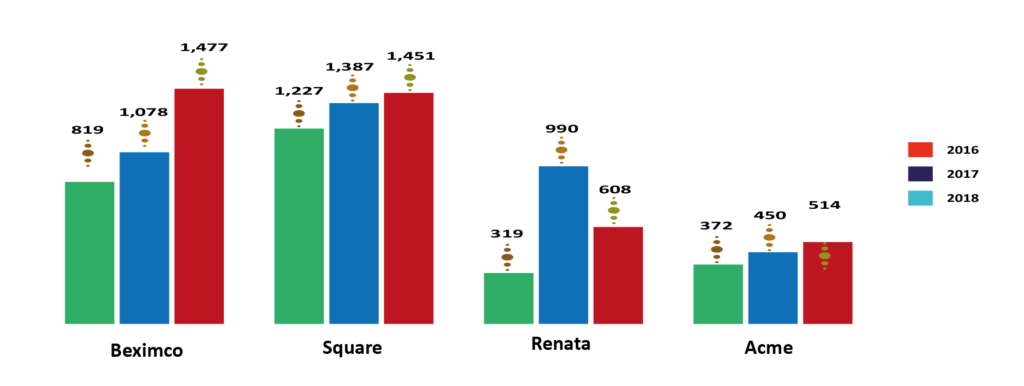
Source: Annual Report of respective companies & EBLSL report
Sources of raw materials
Local pharmaceutical manufacturers largely depend on imported raw materials as around 90 to 95 percent of the total needs for active pharmaceutical ingredients (APIs) is met through imports.
Local companies such as Square Pharma, Beximco Pharma, ActiveFine Chemicals, ACI Limited, Globe Pharma, Gonosastha Pharma, Opsonin Pharma, Drug International and Eskayef currently produce around 40 APIs.
ActiveFine Chemicals Ltd, a public listed company specialized in manufacturing APIs, and it does not produce any finished medicine. Ganashastha Pharmaceuticals Limited produces approximately 60% of the raw materials produced locally.
There are 2,805 valid sources of raw material from where pharmaceuticals manufacturers usually procure raw materials (source: DGDA) However, a substantial portion of the raw materials are sourced from India, China, Italy, and Germany.
Raw material Import vs Local Production (BDT mn)
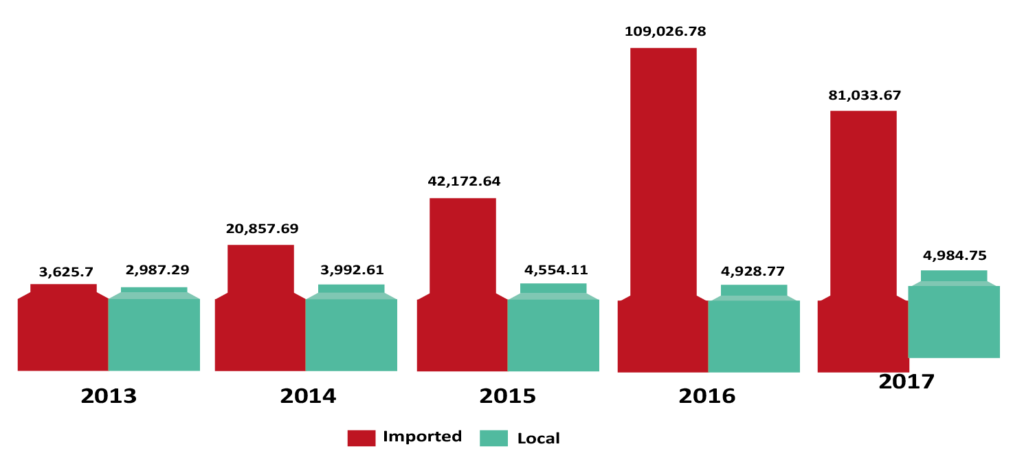
Source: Annual Report of respective companies & EBLSL report
What is the future of Bangladesh’s pharmaceutical industry?
The pharmaceuticals industry has enormous potential to expand in the future. The value of the global generic drug market was around USD 200 billion in 2015 and is expected to reach approximately USD 380 billion by 2021.
Bangladesh could become a major supplier of this highly demanding yet competitive industry as labour cost remains relatively low. Other major generic drugs producing hubs like India and China are losing low-cost advantages as the cost of labour to these countries have increased in recent years.
Labour cost in Bangladesh is three times lower than that of China and India which gives a competitive edge to local manufacturers and the price of our medicine is understood be among one of the lowest in the world. As a result, Bangladesh has more potential in the export market than its competitors.
In 2002, an agreement concerning Trade-Related Aspects of Intellectual Property (TRIPS) by WTO, was signed allowing Bangladesh, among other 49 least developed countries (LDCs), to export patent-free drugs to any country from 2006 to 2016.
This privilege was later extended and Bangladesh has been exempted from the obligations to implement patents and data protection for pharmaceutical products until January 2033. On top of this, more than thousands pharmaceutical products earned necessary registration for export which means a big jump in earnings is highly likely for the foreseeable future.
To facilitate further growth of this promising industry, the government of Bangladesh has already allocated 200 acres of land to establish an API industrial park in Munshiganj, some 37 km away from the capital, where APIs would be produced. What will happen then is the cost of APIs would be reduced thus enabling local manufacturers to produce their drugs at a lower cost.
One of the major challenges for the local pharmaceutical sector to emerge as a truly global player of the 380 billion US dollars markets, is its dependency on imported raw materials. If this issue is addressed then the country can save at least 70% of the total imports of raw materials.
Additionally, Bangladesh would be able to earn more by exporting APIs to other countries as the global APIs market is estimated to be around US$ 238 billion once the proposed park is constructed. Industry insiders urge the government to speed up the construction works so that local companies can produce APIs locally which will reduce the production cost significantly making their products’ price competitive in the world market.
Reporting by Abdul Wadud Shuvo (awadud@newvision.rosetech.dev), Editing and Designed by Sujon Ahamed, Business Consultant (sahamed@newvision.rosetech.dev), NewVision Solutions Ltd.


